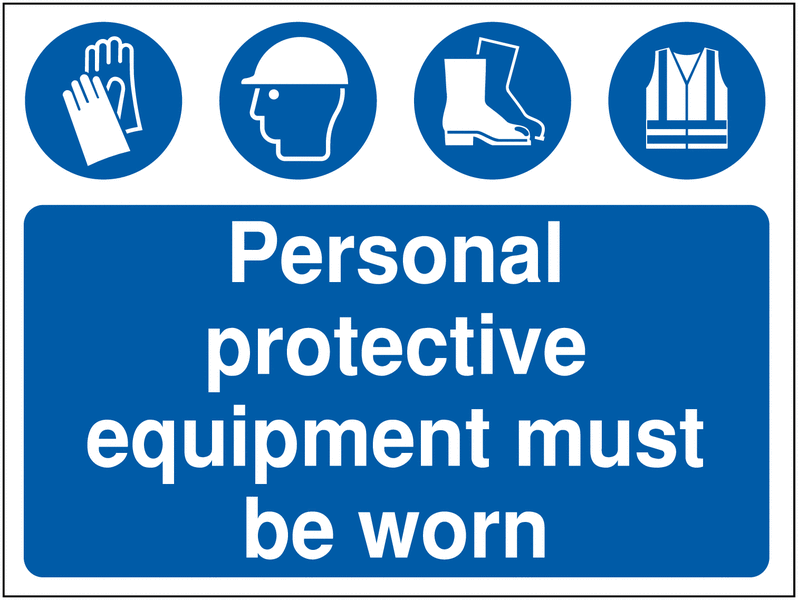
Personal Protective Equipment (PPE) is an essential aspect of workplace safety. This toolbox talk article aims to discuss the benefits of wearing PPE, the types available, common excuses for not wearing PPE, and the consequences of not using PPE. We will also go through specific PPE requirements for different jobs and situations. So let’s dive in!
Benefits of Wearing PPE
Wearing appropriate PPE can greatly reduce the risk of workplace injuries and illnesses. Some of the key benefits include:
- Protection against physical, chemical, and biological hazards
- Prevention of long-term health problems
- Compliance with industry regulations and standards
- Reduction of workplace accidents and associated costs
Types of Personal Protective Equipment (PPE)
There are various types of PPE designed for different job tasks and conditions. Some common examples include:
- Safety helmets
- Safety goggles and monogoggles
- Gloves
- Safety shoes
- Hearing protection
- Safety belts/harnesses
- Respiratory protection
- Life jackets and life-saving equipment
- Specialized equipment like H2S monitors, LEL indicators, oxygen analyzers, and SCBA
Common Excuses for Not Wearing PPE
Despite the proven benefits of PPE, some workers still avoid wearing it. Typical excuses include:
- Discomfort or inconvenience
- Belief that PPE is unnecessary for their specific task
- Lack of awareness about the importance of PPE
- Unavailability of proper PPE
It’s crucial to address these excuses and ensure that workers understand the importance of wearing appropriate PPE.
What Can Happen If You Don’t Use PPE?
Failing to use PPE can result in severe consequences, such as:
- Increased risk of injury or illness
- Non-compliance with industry regulations, resulting in fines or penalties
- Higher workplace accident rates
- Potential long-term health problems
Key PPE Requirements for Different Work Situations
Coveralls
Coveralls must be worn in all workplaces, Special disposable coveralls recommended while entering contaminated areas
Safety Helmets
Safety helmets are required in all fieldwork areas, with exceptions only for indoor office spaces and while riding inside vehicles.
Eye Protection
Safety goggles or industrial-type eye protection is required in all fieldwork areas, with the same exceptions as safety helmets.
Safety Shoes
Safety shoes are required in all fieldwork areas.
Monogoggles
Monogoggles are required when entering posted areas/units or while doing PM jobs on batteries.
Gloves
Leather, cotton, or rubber etc gloves are required as applicable, depending on the nature of the work. for example Chemical-resistant gloves or rubber gloves must be worn when handling hazardous chemicals or contaminated equipment and batteries.
Hearing Protection
Hearing protection should be used when working in noisy areas to prevent hearing loss.
Safety Belts/Harnesses
Safety belts and harnesses are compulsory while working on elevations 6 feet above grade to prevent falls.
Special PPE for Hazardous/Toxic Chemicals
Special PPE, such as H2S monitors, LEL indicators, oxygen analyzers, and SCBA, is required when opening process equipment and/or lines suspected of containing hazardous or toxic chemicals.
Respiratory Protection
Use proper respiratory protection suitable for the atmosphere, depending on the type of contaminant (e.g., dust masks for dust, chemical canister respirators for aerosols and chemicals).
Life-Saving Equipment
Life jackets, lifebuoys, rafts, and other life-saving equipment must be available when working above water at piers and berths.
SCBA Usage
SCBA must be worn if you are trying to control a toxic gas release. Do not attempt to use a breathing apparatus if you are not trained to use it.
Conclusion
Personal Protective Equipment (PPE) is vital for ensuring workplace safety. It’s essential to wear appropriate PPE for different job tasks and conditions, as failure to do so can result in severe consequences. Employers must provide proper PPE and ensure that workers are trained to use them correctly. Workers also need to take responsibility for their safety and wear PPE as required. Remember, wearing PPE is not optional but mandatory, and it can save lives and prevent injuries. So, always wear your PPE, and stay safe!
